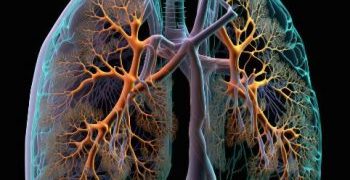Fever is the most common symptom in neck infections. The fever often persists and can lead to dehydration, hyperosmolarity, a high white blood cell count, and decreased platelets. Laboratory tests that are used to diagnose spine infection include a complete blood count (CBC) with differential, C-reactive protein (CRP), and erythrocyte sedimentation rate (ESR).
Pain is another common symptom of a deep neck abscess. It can range from mild to severe. In addition to neck pain, there may be swelling, hematoma, or a mass present in the neck. These symptoms are usually associated with a change in gait or flexion of the head.
Trismus, dysphagia, and odynophagia are also typical of proximal deep neck infections. The trismus is due to local inflammation and pharyngeal wall involvement. Patients may sneeze or cough or have difficulty speaking with a muffled voice known as the “hot potato” voice. Dysphagia can occur if the esophagus is affected, and the patient’s mouth may become dry.
Swelling of the neck down to the hyoid bone is another sign that a deep neck abscess is present. The swelling can be seen on CT scanning or by palpation.
The peritonsillar space is a lymph node-like structure located in the lateral portion of the throat. It is prone to infection by bacteria from upper respiratory tract infections. It is commonly found in children and can be difficult to identify and treat.
It is usually treated with antibiotics. The most common organism in a peritonsillar abscess is S aureus. It occurs in up to 80% of peritonsillar abscesses and b-hemolytic streptococcus is the second most common organism.

Parapharyngeal abscesses are also very common. They occur when an untreated tonsillar infection is left untreated, and result in a collection of pus within the pharyngeal space. These are usually accompanied by fever, sore throat, odynophagia and swelling of the neck down to the hyoid bones.
Infection of the retropharyngeal space is the most common in infants and toddlers. It is located in the anterior and mid-portion of the neck, extending from the base of the skull to the superior mediastinum.
It connects to every other major fascial neck space and is divided into anterior and posterior compartments by the styloid process. Infections of the retropharyngeal spaces usually originate in the tonsils or pharynx, although local spread from odontogenic sources and lymph nodes is possible.
Posterior retropharyngeal space infections are more difficult to diagnose clinically as trismus, dysphagia and swelling are not always apparent. Infection of the retropharyngeal area can be complicated by Lemierre syndrome, which causes thrombophlebitis of the internal jugular vein, or ipsilateral Horner’s syndrome if the cranial nerves are involved.
Suppurative jugular thrombophlebitis in the posterior retropharyngeal space can cause severe complications such as arteritis and rupture of the carotid artery or ipsilateral Horner’s Syndrome. These complication can be life-threatening.
Infection of the parapharyngeal space, meanwhile, usually involves the tonsils or pharynx, and it is more often seen in adults than in children. Infection of the parapharyngeal neck space can be complicated by septicemia, cranial nerve palsies, and mediastinitis.









